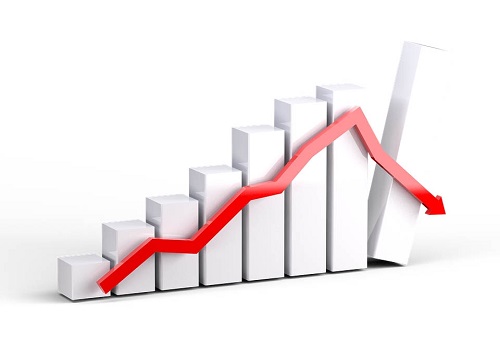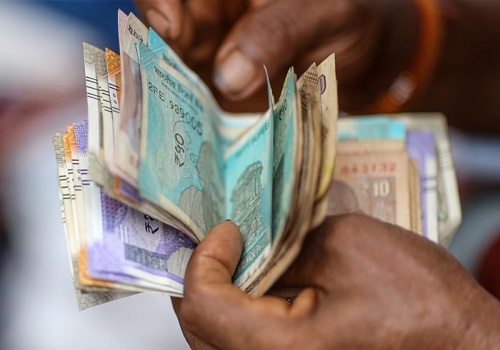`Decoding the Downturn: Analyzing the Decline in Indian Exports` By Mr. Amit Gupta, Kedia Advisory

Below The Comment On "Decoding the Downturn: Analyzing the Decline in Indian Exports" By Mr. Amit Gupta, Kedia Advisory
In July 2023, India witnessed a concerning decline in its exports, with outbound shipments plummeting by 16 percent compared to the previous year, marking the lowest levels since October 2022. This decline raises several questions about the state of India's economy and its position in the global trade landscape. To gain a comprehensive understanding of this issue, we will closely examine the data and its underlying factors, assess the implications, and determine whether this trend should genuinely be a cause for concern.
India boasts an extensive network of trade partners, exporting goods to 240 countries across the world. However, the recent data reveals a stark reality – exports from India declined in a significant number of these destinations. Notably, exports declined in 134 out of these 240 countries. The countries experiencing substantial drops in Indian exports include some major players in global trade such as the United States, the United Arab Emirates, China, Bangladesh, and Germany. On the flip side, there are encouraging signs of growth in Indian exports to countries like the Netherlands, the United Kingdom, and Saudi Arabia.
Delving deeper into the data, it becomes evident that India's exports exceed USD 1 billion in 41 countries. These 41 nations account for a substantial 87 percent of India's total exports. However, the picture is mixed when it comes to the performance in these key markets. Indian exports showed positive growth in 12 of these countries but declined in the remaining 29. This disparity underscores the complexity of the issue and necessitates a nuanced analysis.
One notable aspect of the data is the reduction in India's trade deficit, which fell by 18.5 percent from USD 25.4 billion in July 2022 to USD 20.7 billion in July 2023. This seemingly positive development, however, needs to be seen in light of the government's conscious decision to restrict the export of certain edible products. This move was primarily aimed at prioritizing domestic food security, and while it contributed to the decrease in the trade deficit, its implications are limited to a specific sector of India's economy.
Amidst the challenges faced by the goods export sector, India's service segments have shown commendable growth. This has played a pivotal role in propelling the country's total exports and imports of goods and services beyond the USD 800 billion mark during the first half of 2023. The resilience of India's service sector, encompassing IT services, software, and business process outsourcing, has been a significant factor in stabilizing India's economy during these turbulent times.
The data also highlights a shift in India's trade dynamics. The share of Free Trade Agreement (FTA) partners in India's merchandise exports has decreased from 30.1 percent in the first six months of 2022 to 26.8 percent in 2023. This suggests that India is diversifying its export destinations and reducing its reliance on traditional markets. While diversification is generally seen as a positive strategy, it also raises questions about the economic health of India's longstanding trading partners.
Another noteworthy trend is the remarkable surge in imports from Russia, which increased by a staggering 369.44 percent to USD 46.33 billion in the last fiscal year. This abrupt increase raises concerns about the nature of these imports and their implications for India's trade balance, as well as the geopolitical context within which these imports are occurring. When we step back and examine the larger picture, we see that India's exports of goods and services together reached unprecedented levels in 2022-23, growing by 14 percent to USD 770 billion, compared to USD 676 billion in the previous fiscal year. This indicates that while there may be periodic fluctuations, India's export landscape is not perpetually declining.
To gain a holistic understanding of India's export performance, we must acknowledge the external factors affecting international trade. The ongoing conflict in Ukraine, rising inflation rates, tighter monetary policies, and global financial instability have cast a shadow on the global trade outlook for 2023. These challenges are not unique to India and are impacting nations worldwide. Moreover, the recent warning from the World Meteorological Organization about extreme weather events and rising temperatures due to El Niño adds another layer of complexity. These environmental concerns can disrupt various industries, including agriculture, which, in turn, can have an impact on export volumes.
Policy Recommendations: In light of the decline in exports and the formidable global trade environment, India needs a strategic approach to rejuvenate and sustain export growth. Here are some data-driven policy recommendations:
Quality and Competitiveness: Data indicates that India should prioritize improving product quality and enhancing supply chain competitiveness. This will enable Indian exporters to effectively compete in international markets and meet the evolving demands of consumers worldwide.
Diversification: While maintaining focus on traditional markets, India should actively seek to diversify its export destinations. The data underscores the importance of exploring emerging markets and regions with high growth potential to mitigate the impact of declining exports in specific countries.
Free Trade Agreements (FTAs): The decline in FTA partner share in India's merchandise exports suggests that India should carefully evaluate its participation in FTAs and their impact on its trade balance. Negotiating favourable terms and ensuring that FTAs benefit Indian industries is paramount.
Geopolitical Considerations: The surge in imports from Russia demands a data-driven assessment of the geopolitical implications of trade relationships. India should explore options to diversify its import sources to reduce dependency on specific countries.
Innovation and Research: Data indicates that encouraging innovation, research, and development across industries can lead to the creation of high-value exports, bolstering India's position in global markets.
Sustainable Practices: As climate change concerns grow, data highlights the need to integrate sustainable and eco-friendly practices into production processes. This not only appeals to environmentally-conscious consumers but also opens up new export opportunities in the green economy.
The decline in India's exports in July 2023 is undoubtedly a matter of concern, but it warrants a thorough examination within the context of global challenges and trends. India's export performance is influenced by a multitude of factors, including geopolitical dynamics, global economic conditions, and domestic policies. While there are short-term fluctuations, the data underscores that India's exports of goods and services have reached new heights in 2022-23, growing by 14 percent to USD 770 billion. This demonstrates India's capacity to rebound from setbacks. Amidst the challenges, India has the potential to continue thriving as a significant player in the global trade landscape. By adopting data-driven strategies that emphasize quality, diversification, and sustainability, India can navigate the uncertainties of international trade. The decline in exports should serve as a data-driven call to action for policymakers, industry stakeholders, and entrepreneurs to collaboratively strengthen India's position in the global trade arena.
Above views are of the author and not of the website kindly read disclaimer





.jpg)















